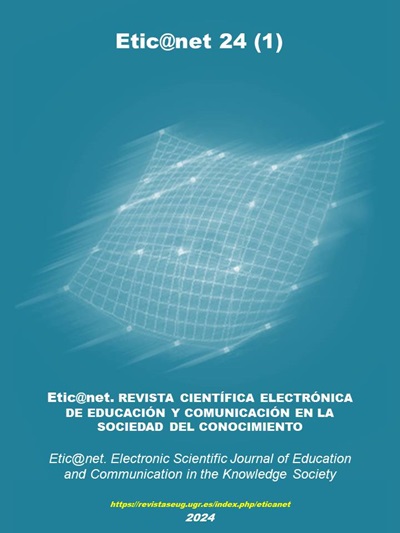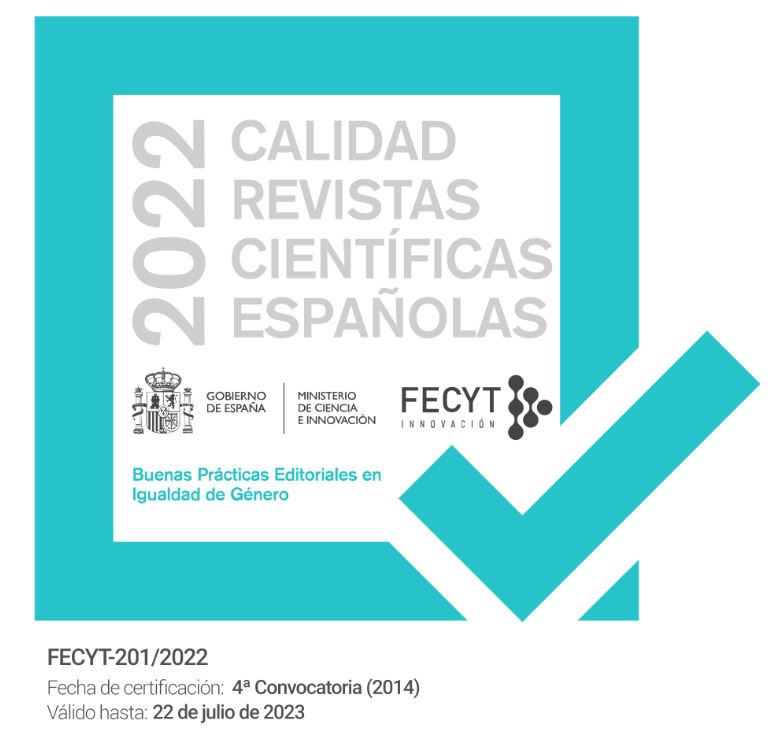FORMACIÓN EN ACCESIBILIDAD WEB. CONTRIBUCIONES AL ACCESO DIGITAL DE INFORMACIÓN
DOI:
https://doi.org/10.30827/eticanet.v24i1.29915Keywords:
Higher education; Human resources training; Web Accessibility; evidence-based software engineering; research projects., higher education, human resources training, web accesibility, evidence-based software engineering, research projects.Abstract
Nowadays, the society’s complexity demands responding to different challenges. So, Web Accessibility is an alternative to help guarantee access to information in digital environments. The article presents results from the line of research oriented to the training of human resources in Web Accessibility. Its study and application in society shows a high interest in the subject in the national and international context. Thus, students and professors who deal with this subject, are incorporated from this Higher Education space, are incorporated in their performance as scholarship holders, team staff or thesis students, and through teaching, research and transfer of knowledge and services, the knowledge and practices around AW transcend university environments. Method, the study is descriptive. In order, to systematize the experience, an adaptation of Evidence-Based Software Engineering was applied. The results show that both women and men are interested in this topic. Finally, it is understood that this contribution lies in analyzing and applying different aspects of Computer Science, such as science and technology, delving into Software Engineering and Web Accessibility.
Downloads
References
Alim, S. (2021). Web Accessibility of the Top Research-Intensive Universities in the UK. SAGE Open, 11(4). https://doi.org/10.1177/21582440211056614
Alfonzo, P. L., y Mariño, S. I. (2023). Accesibilidad web. Un estudio bibliométrico. Revista Iberoamericana de Tecnología en Educación y Educación en Tecnología, nro. 36. https://doi.org/10.24215/18509959.36.e12
Ara, J., Sik-Lanyi, C. y Kelemen, A. (2023). Accessibility engineering in web evaluation process: a systematic literature review. Univers Access Information Socirty. 1-34. https://doi.org/10.1007/s10209-023-00967-2
CIDAT. (2023). Centro de Investigación, Desarrollo y Aplicación Tiflotécnica. http://cidat.once.es/
Campoverde-Molina, M., Luján-Mora, S. y Valverde, L. (2023). Accessibility of university websites worldwide: a systematic literature review. Univers Access Information Society, nro. 22, 133–168. https://doi.org/10.1007/s10209-021-00825-z
Días, J., Carvalho, D., Paredes, H., Martins, P., Rocha, T. y Barroso, J. (2021). Automated Evaluation Tools for Web and Mobile Accessibility: A Systematic Literature Review. In: Abraham, A., et al. Innovations in Bio-Inspired Computing and Applications. IBICA 2021. Lecture Notes in Networks and Systems, vol. 419. Springer, Cham. https://doi.org/10.1007/978-3-030-96299-9_43
Ismail, A. Y Kuppusam, K. S. (2022). Web accessibility investigation and identification of major issues of higher education websites with statistical measures: A case study of college websites. Journal of King Saud University – Computer and Information Sciences, nro. 34, 901–911.
ISO. (2023). Organización Internacional de Normalización. https://www.iso.org/
ISO. (2008a). ISO/IEC 9241-171. Ergonomics of human-system interaction -- Part 171: Guidance on software accessibility.
ISO. (2008b) ISO/IEC 9241-20. Ergonomics of human-system interaction -- Part 20: Accessibility guidelines or information/communication technology (ICT) equipment and services.
ISO. (2008c) ISO/IEC 9241-151. Ergonomics of human-system interaction -- Part 151: Guidance on World Wide Web user interfaces.
ISO. (2012) ISO/IEC 40500. Information technology - W3C Web Content Accessibility Guidelines (WCAG) 2.0.
IAAP. (2022). Asociación Internacional de Profesionales de la Accesibilidad. https://www.accessibilityassociation.org/s/
Kesswani, N. y Kumar, S. (2016). Accessibility analysis of websites of educational institutions, Perspectives in Science, Vol. 8, 210-212. https://doi.org/10.1016/j.pisc.2016.04.031.
Luján Mora. S. (2023). Accesibilidad Web, Definición de accesibilidad web. http://accesibilidadweb.dlsi.ua.es/?menu=definicion
Mariño, S. I. y Alfonzo, P. L. (2019). Evidencias de Accesibilidad Web en la generación de sitios. Propuesta de un método. Revista Iberoamericana de Tecnología en Educación y Educación en Tecnología, no. 23, pp. 52-60. doi: 10.24215/18509959.23.e06
ODS. (2023). Programa de las Naciones Unidas para el Desarrollo. https://www.undp.org/es/sustainable-development-goals
OEA (2013). Organización de los Estados Americanos (OEA), El Acceso a la Información Pública, un Derecho para ejercer otros Derechos. https://www.oas.org/es/sap/dgpe/concursoinformate/docs/cortosp8.pdf
ONCE. (2023). Por la inclusión de personas ciegas y con discapacidad. https://www.once.es/
PAE. (2023). PAe – Portal Administración electrónica. https://administracionelectronica.gob.es/pae_Home
Sidar. (2016). Fundación Sidar - Acceso Universal-. http://www.sidar.org/.
SNA (2010). Senado de la Nación Argentina. Ley 26.653: Accesibilidad de la Información en las Páginas Web. Autoridad de Aplicación. Plazos. Reglamentación. http://servicios.infoleg.gob.ar/infolegInternet/anexos/175000-179999/175694/norma.htm
UNE. (2020). Asociación Española de Normalización. https://www.une.org/
WALP. (2023). Web Accessibility Laws & Policies | Web Accessibility Initiative (WAI), W3C. https://www.w3.org/WAI/policies/
WCAG. (2008). Web Content Accessibility Guidelines (WCAG) 2.0. https://www.w3.org/TR/WCAG20/
WCAG. (2023a). Web Content Accessibility Guidelines (WCAG) 2.1. https://www.w3.org/TR/WCAG21/
WCAG. (2023b). Web Content Accessibility Guidelines (WCAG) 2.2. https://www.w3.org/TR/WCAG22/
W3C. (2023). Sobre el W3C. http://www.w3c.es/Consorcio/
WebAIM. (2019). Web Accesibility In Min. Accessibility Evaluation Tools. https://webaim.org/articles/tools/
Downloads
Published
Issue
Section
License
The authors who publish in this journal agree to the following terms: The authors retain the copyright and grant the journal the right to be the first publication of the work as well as licensed under a Creative Commons Attribution License that allows others to share the work with an acknowledgment of the authorship of the work and the initial publication in this magazine. Authors are allowed and encouraged to disseminate their work electronically (for example, in institutional repositories or on their own website) before and during the submission process, as it may lead to productive exchanges as well as further citation. Earliest and greatest of published works (See The Effect of Open Access).













